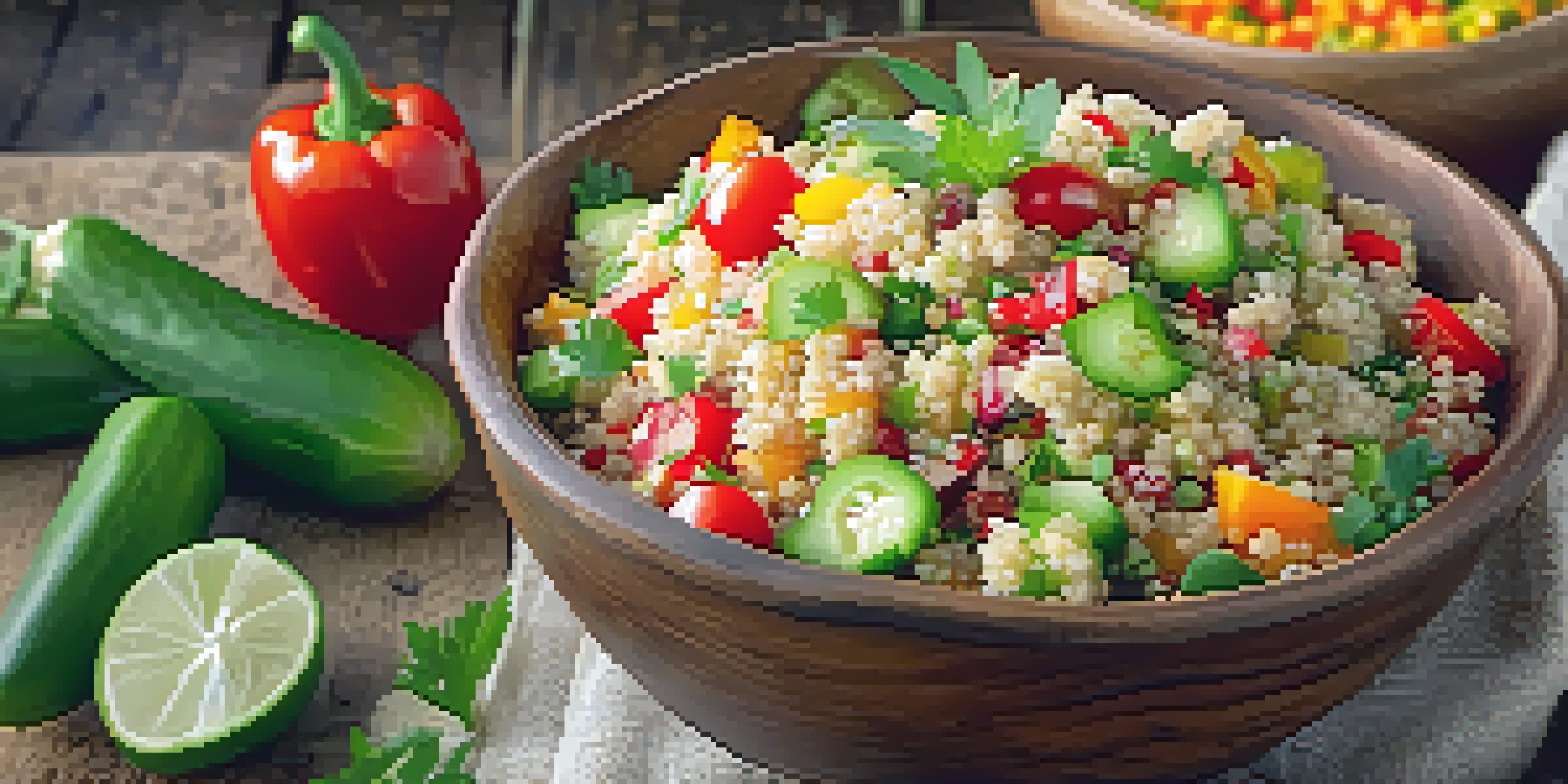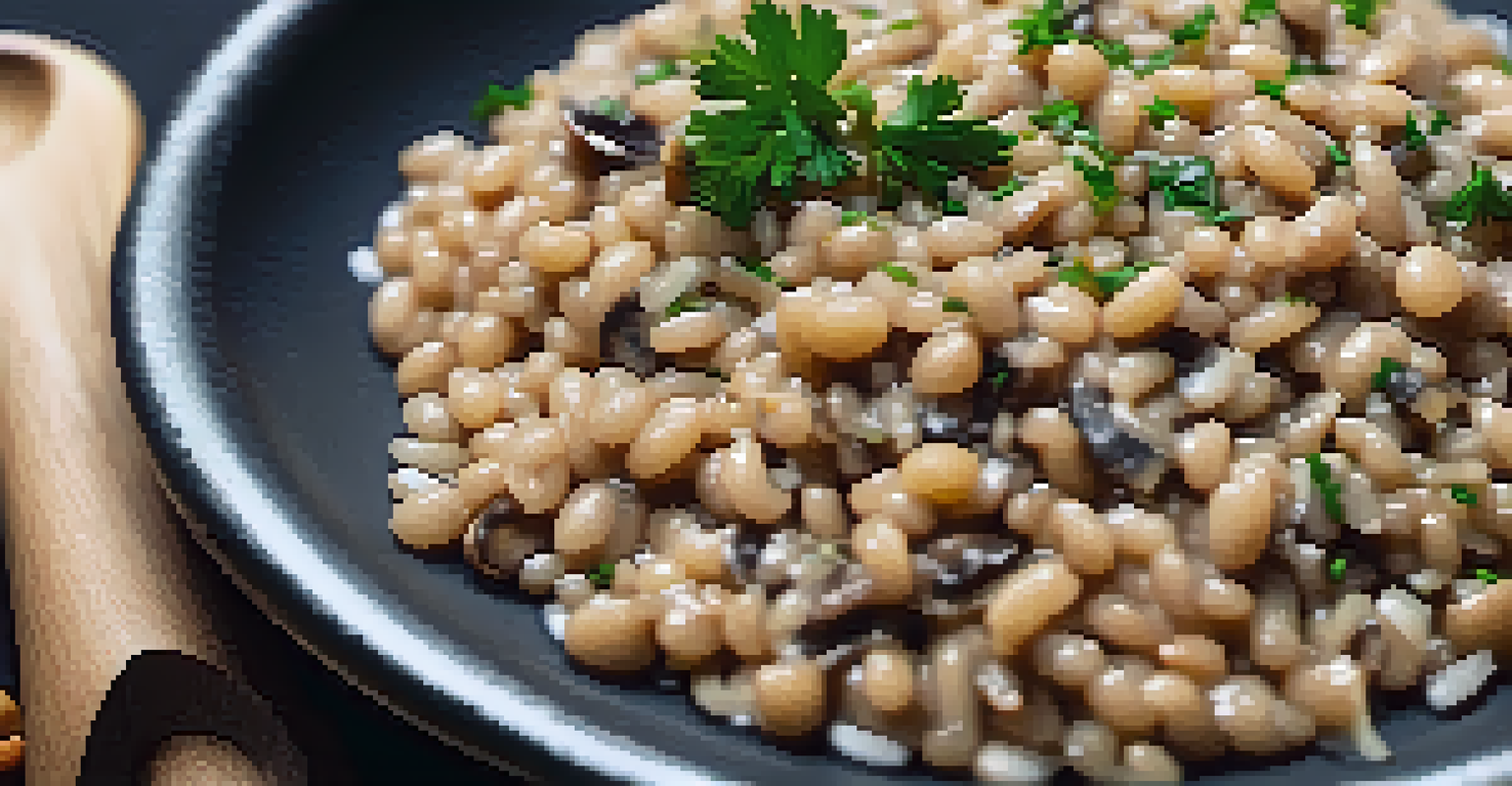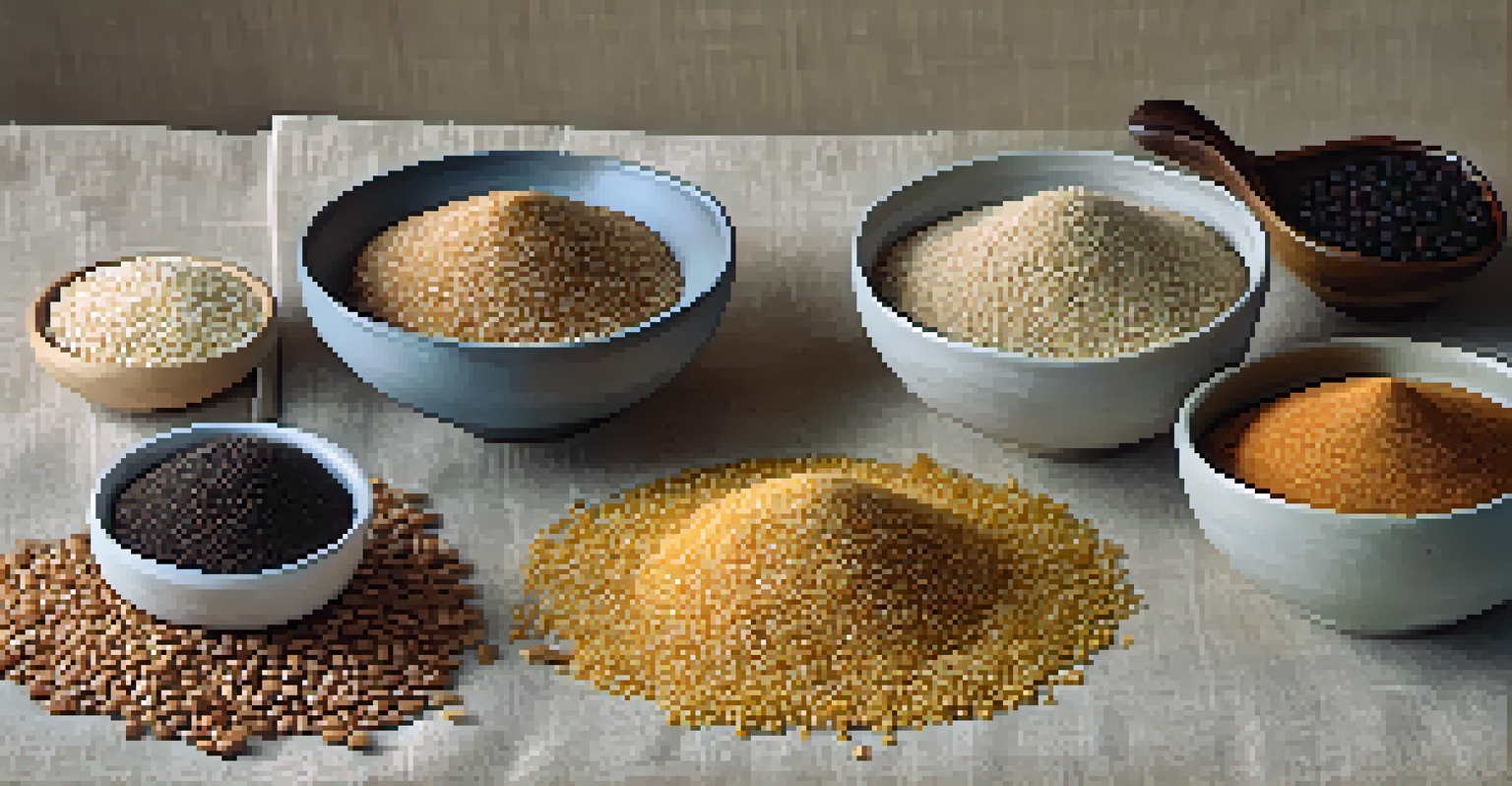Cooking with Ancient Grains: Recipes from Historical Cultures

The Nutritional Benefits of Ancient Grains
Ancient grains, such as quinoa, farro, and spelt, are not just trendy; they pack a nutritional punch. They are often higher in protein, fiber, and essential nutrients compared to modern grains. For example, quinoa is a complete protein, meaning it contains all nine essential amino acids, making it a fantastic option for vegetarians and vegans.
Let food be thy medicine and medicine be thy food.
Incorporating ancient grains into your diet can also help with digestion due to their high fiber content. This means better gut health and more regularity, which is something many of us strive for. Plus, they have a lower glycemic index, making them a smart choice for those managing blood sugar levels.
As you explore recipes from different cultures, you'll not only enjoy the health benefits but also the diverse flavors and textures these grains bring to your meals. Think of how a hearty bowl of farro salad or a warm quinoa pilaf can transform your dining experience!
Quinoa: The Incan Superfood
Quinoa, often referred to as the 'mother grain,' has been cultivated in the Andes for thousands of years. This versatile grain can be used in salads, soups, or as a base for various dishes. One popular recipe is the traditional Peruvian Quinoa Salad, which combines fresh vegetables, herbs, and a zesty lime dressing.

Cooking quinoa is simple but requires a little care. Rinse the grains thoroughly to remove the saponins, which can give them a bitter taste. Then, cook them in a pot with water or broth, allowing them to absorb all the flavors while maintaining their fluffy texture.
Ancient Grains Boost Nutrition
Ancient grains like quinoa, farro, and spelt are rich in protein, fiber, and essential nutrients, making them a healthier choice than modern grains.
Not only is quinoa a staple in South American cuisine, but its adaptability means it can also be incorporated into many dishes worldwide. From breakfast bowls topped with fruits to savory stir-fries, the possibilities are endless.
Farro: A Taste of Ancient Rome
Farro, a grain that dates back to ancient Rome, is known for its nutty flavor and chewy texture. It's a fantastic addition to soups, salads, and side dishes. One classic recipe is Farro Risotto, where the grain is slowly cooked in broth, absorbing all the rich flavors while creating a creamy consistency.
You are what you eat, so don't be fast, cheap, easy, or fake.
Cooking farro is a bit different from other grains; you'll want to soak it beforehand to reduce cooking time. Once soaked, simmer it until tender, typically around 30 minutes. This ensures that the grains remain firm and don't become mushy, resulting in a delightful bite in every spoonful.
Adding farro to your meals not only enhances the taste but also provides a hearty dose of nutrients. With its high fiber and protein content, it’s a satisfying option for a filling meal or as a side dish.
Spelt: The Grain of the Ancients
Spelt is an ancient grain that is gaining popularity for its rich flavor and health benefits. Hailing from the Middle East, this grain is often ground into flour for baking or cooked whole in salads and soups. A delicious way to enjoy spelt is by making a Spelt Salad with roasted vegetables and a tangy vinaigrette.
When preparing spelt, it's best to rinse the grains to remove any dust or debris. Cooking it is straightforward; simply boil it in water for about 30 minutes until tender. The result is a slightly chewy grain that adds depth to any dish.
Versatile Cooking Options
These grains can be easily incorporated into a variety of dishes, from salads to soups, enhancing both flavor and texture.
In addition to its delightful taste, spelt is also easier to digest than modern wheat varieties. For those with sensitivities, spelt can often be a suitable alternative, allowing you to enjoy baked goods and pasta without discomfort.
Millet: The Versatile Seed
Millet, a tiny seed that has been cultivated for thousands of years, is a staple in many cultures, particularly in Asia and Africa. Its mild flavor makes it incredibly versatile, perfect for both sweet and savory dishes. A popular recipe is Millet Porridge, which can be topped with fruits and nuts for a hearty breakfast.
Cooking millet is a breeze: simply toast it slightly in a pan before adding water to enhance its nutty flavor. After about 20 minutes of simmering, you'll have a fluffy, light grain that can be served as a side dish or incorporated into salads and casseroles.
Millet is not just delicious; it’s also gluten-free, making it a great option for those with gluten sensitivities. Its nutritional profile includes essential minerals like magnesium and phosphorus, adding even more reasons to love this ancient grain.
Teff: The Tiny Grain with Big Flavor
Teff, a staple in Ethiopian cuisine, is one of the smallest grains in the world but packs a mighty nutritional punch. It’s famously used to make Injera, a sourdough flatbread that serves as both a dish and a utensil for scooping up stews and salads. The unique flavor and texture of teff are truly unmatched.
Cooking teff is quite simple: it cooks quickly and can be prepared like porridge or used in baked goods. You can combine it with water and cook it until it reaches a creamy consistency, making it a perfect base for various toppings or additions.
Global Culinary Traditions
Ancient grains are used in diverse cuisines worldwide, connecting us to cultural histories while offering unique flavors and health benefits.
Beyond its culinary uses, teff is rich in protein, fiber, and calcium, making it a superfood. By incorporating teff into your diet, you not only experience the delights of Ethiopian cuisine but also boost your overall health.
Exploring Ancient Grains in Global Cuisines
Ancient grains are not limited to just one region; they are found worldwide, each culture offering its unique twist. For instance, barley is commonly used in Middle Eastern tabbouleh, while amaranth is prominent in Mexican dishes. These grains connect us to our culinary history and show how food evolves over time.
Experimenting with ancient grains opens up a world of flavors and textures. Consider making a Mediterranean grain bowl with farro, or a spicy Indian dish featuring millet. The versatility of these grains allows for creativity in the kitchen, making mealtime more exciting.

As you dive into ancient grain recipes, you’ll find that they not only nourish the body but also tell stories of the cultures they come from. Each dish is a celebration of history, tradition, and innovation, inviting us to appreciate the diverse flavors of our world.
Tips for Cooking with Ancient Grains
Cooking with ancient grains may seem daunting at first, but with a few tips, you'll be a pro in no time. First, always rinse your grains before cooking to remove any debris or bitterness. This simple step can significantly enhance the flavor of your dish.
Next, pay attention to cooking times and liquid ratios, as each grain has its unique requirements. For instance, quinoa typically cooks in about 15 minutes, while farro may take about 30 minutes. Understanding these nuances will ensure your grains turn out perfectly every time.
Lastly, don't shy away from experimenting! Mix different grains together or incorporate them into your favorite recipes. Ancient grains are an excellent way to add variety to your meals while reaping the health benefits they offer.